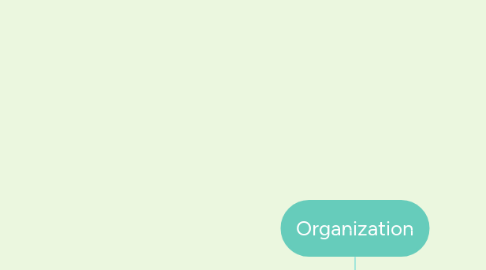Organization
by Atoofa Zaheer


1. Size
1.1. Large: 1: Economic of scale 2: Global reach 3: Vertical Hierarchy 4: Complex 5: Stable market 6: Organization men
1.2. Small: 1: Responsive, flexible 2: Regional Reach 3: Flat structure, organic 4: Simple 5: Niche finding 6: Entrepreneurs
2. Life Cycle
2.1. 1: Entrepreneurial Stage: Crisis: Need for leadership Characteristics: • Small • Non bureaucratic • Survival
2.2. 2: Collective Stage: Crisis: Need for delegation Characteristics: • Rapid growth • Pre bureaucratic • Informal structure • Employees commitment
2.3. 3: Formalization Stage: Crisis: Too much red tape Characteristics: • Formalized • Bureaucratic • Innovation (R&D)
2.4. 4: Elaboration Stage Crisis: Need for revitalization Characteristics: • Large/Mature • Very Bureaucratic • Formalized
3. Size, Bureaucracy and Control
3.1. Bureaucracy 1: Rules and Procedures 2: specialization and division of labor 3: Hierarchy of authority 4: Technically qualified personnel 5: Written communications and records
3.2. Size Vs Structural Control: 1: Formalization Size increase = Formalization increase 2: Centralization Size increase = Centralization decrease 3: Personal Ratios • Top administrator • Professional staff • Clerical staff
3.3. Bureaucracy Vs other forms of control
3.3.1. Bureaucratic Control: 1: Control employees behavior 2: Standardize rules & policies 3: Hierarchy of authority 4: Types of Authorities • Rational legal authority • Traditional authority • Charismatic authority
3.3.2. Market Control: 1: Specified economic & political goals 2: Occurrence of price competition 3: compare prices to evaluate efficiency
3.3.3. Clan Control: 1: Values and beliefs of organization 2: High uncertainty and ambiguity 3: Family like structure 4: Being socialized 5: Trust on employees
